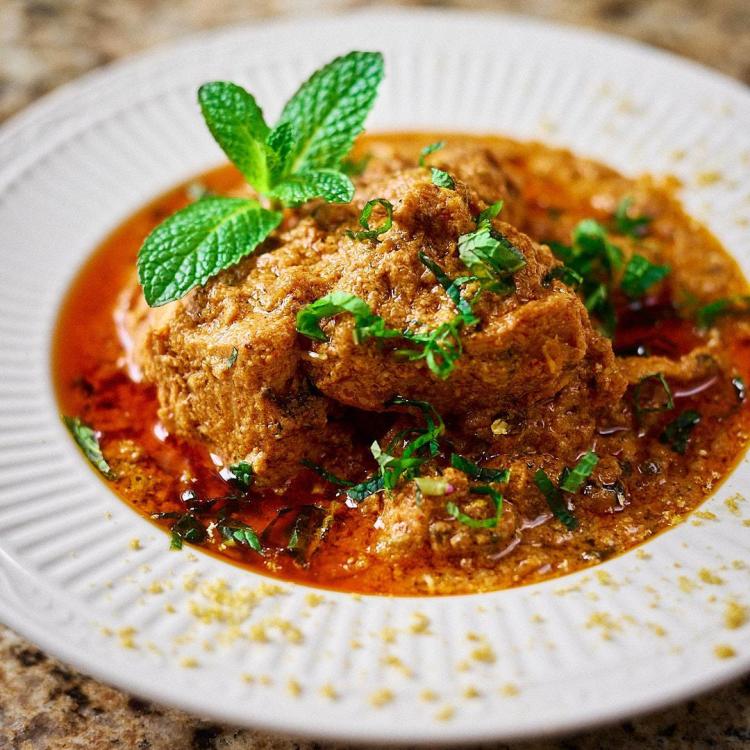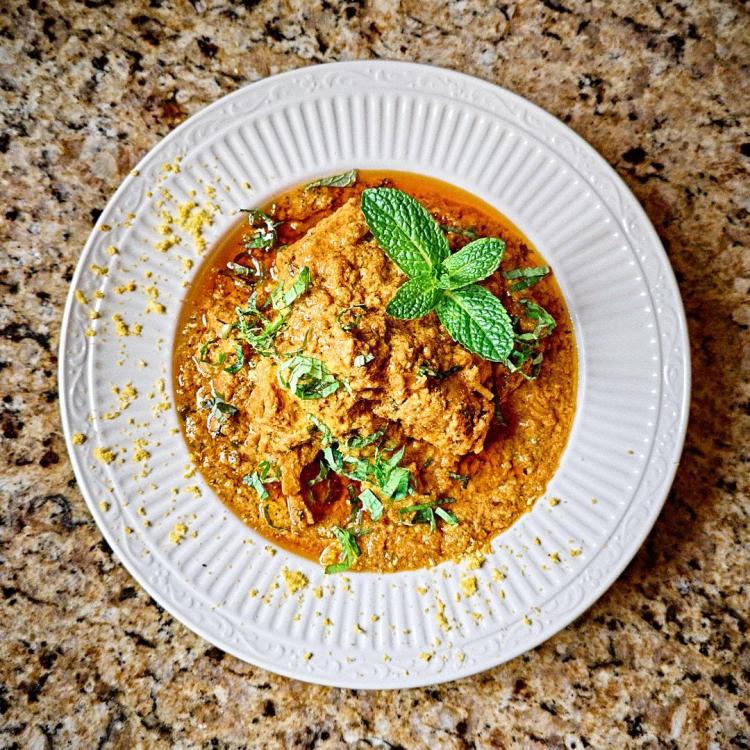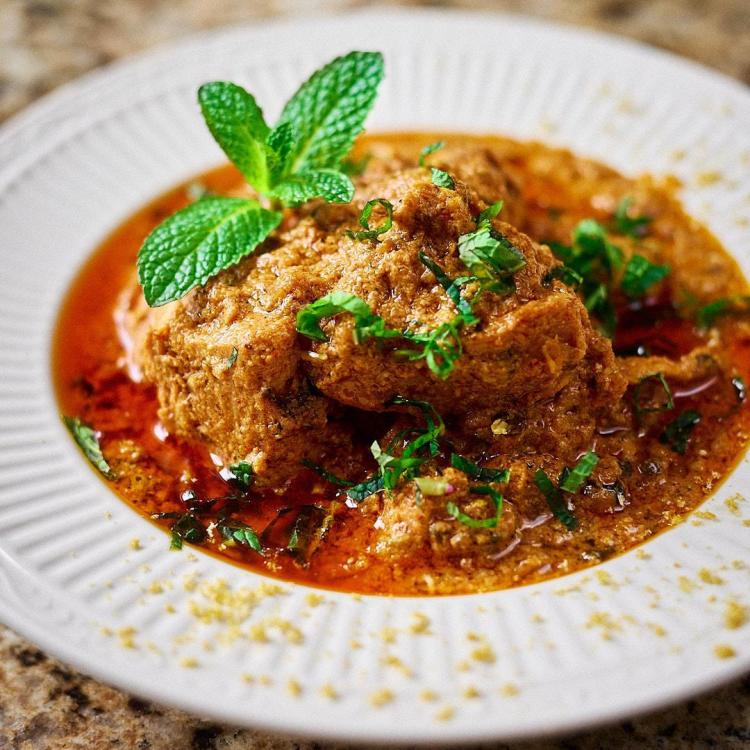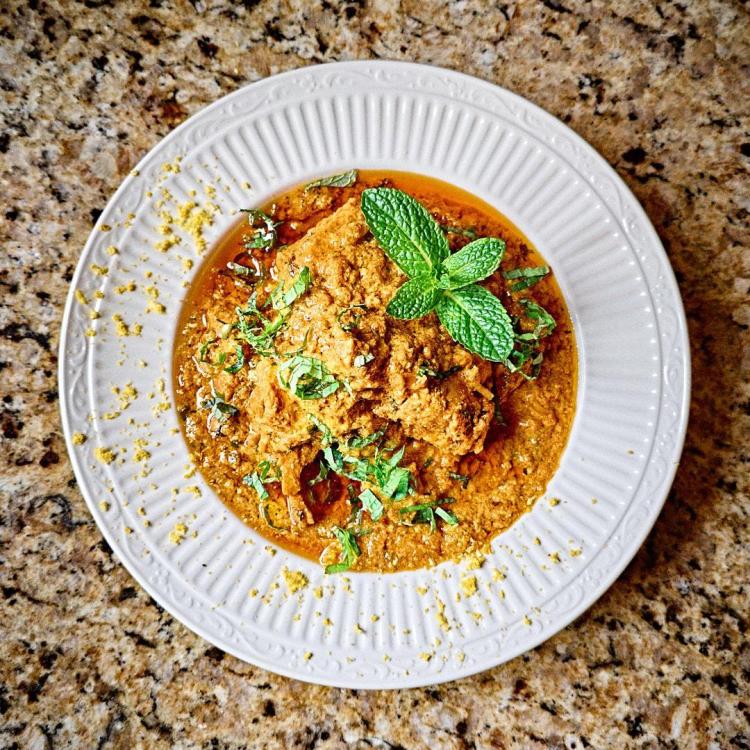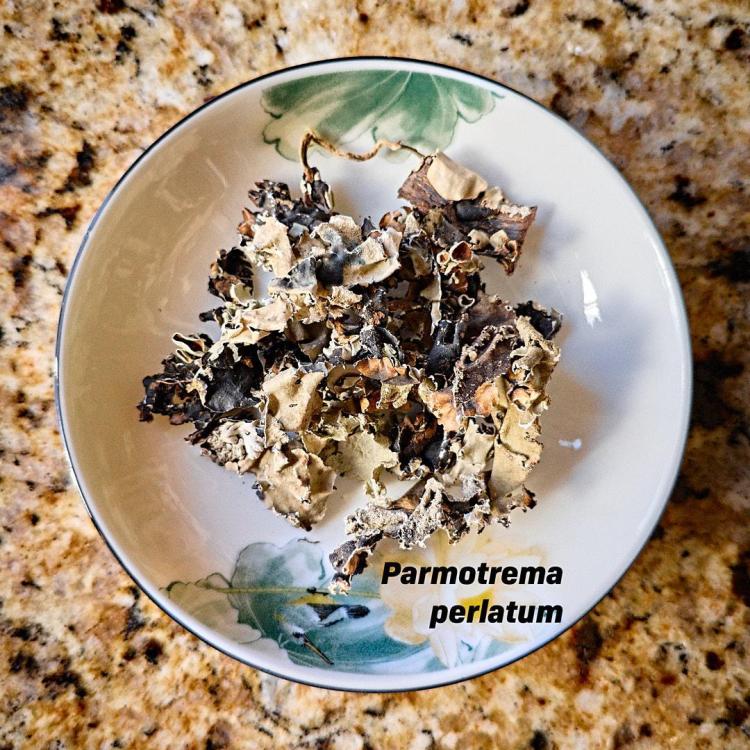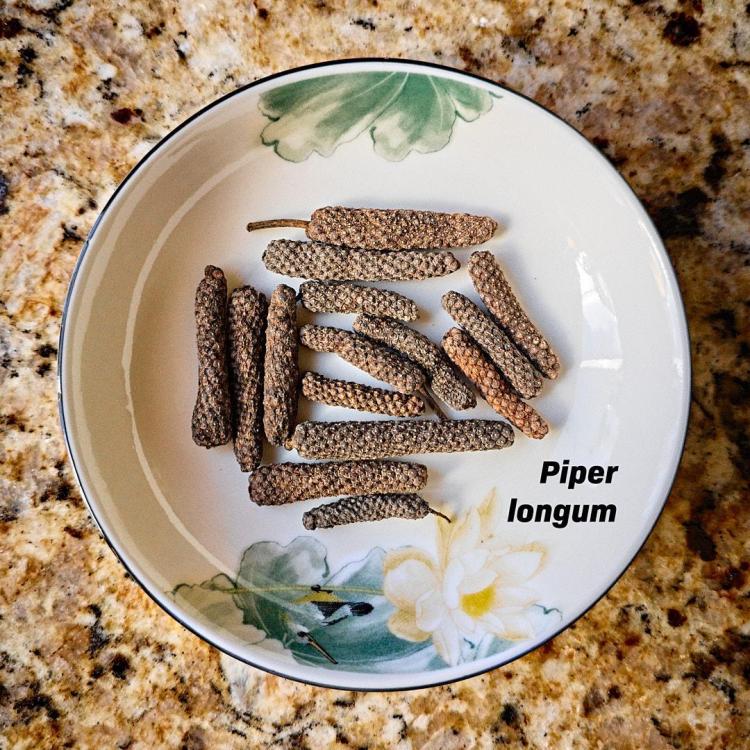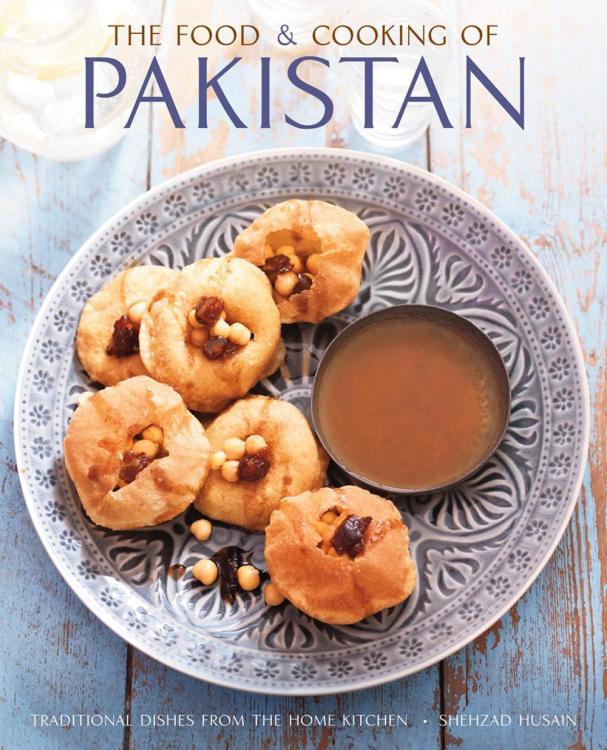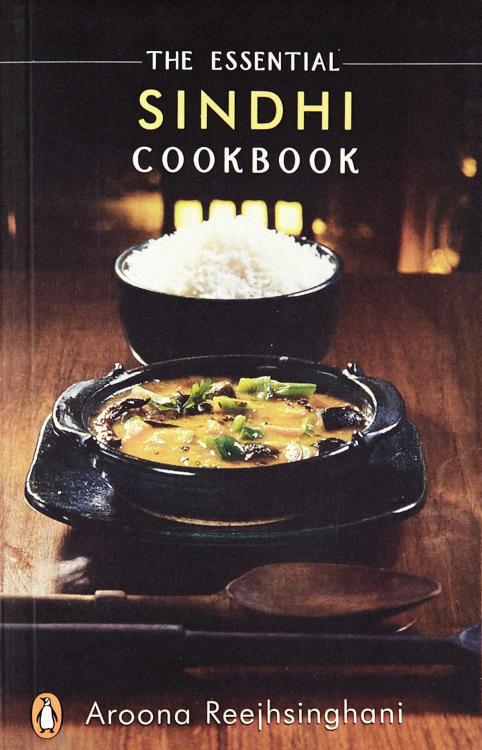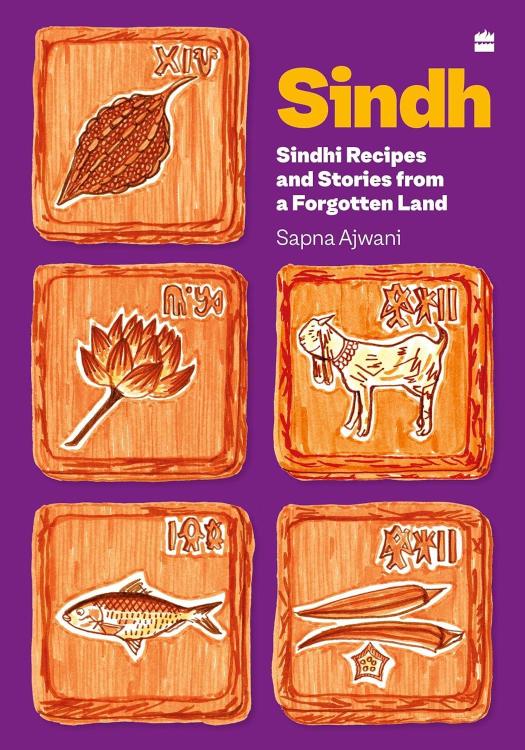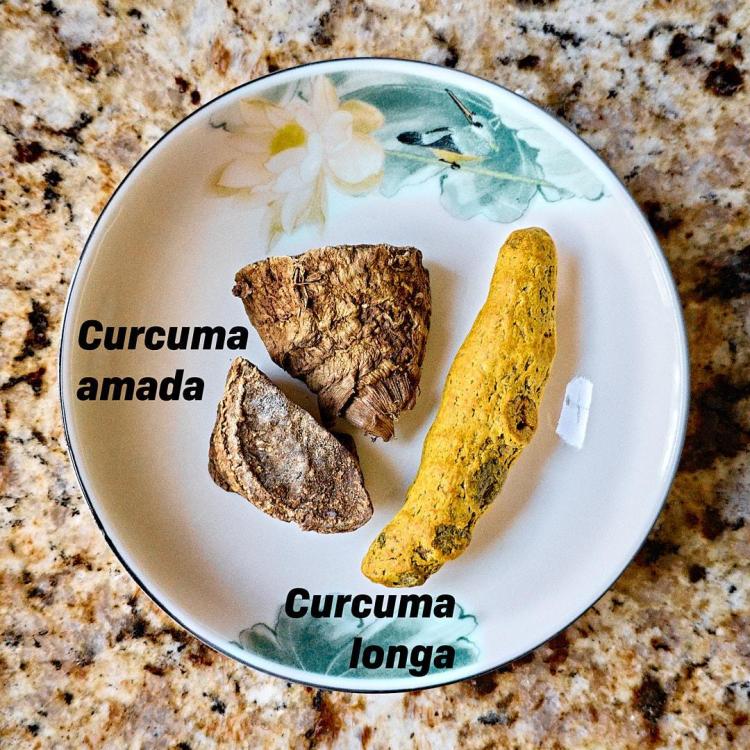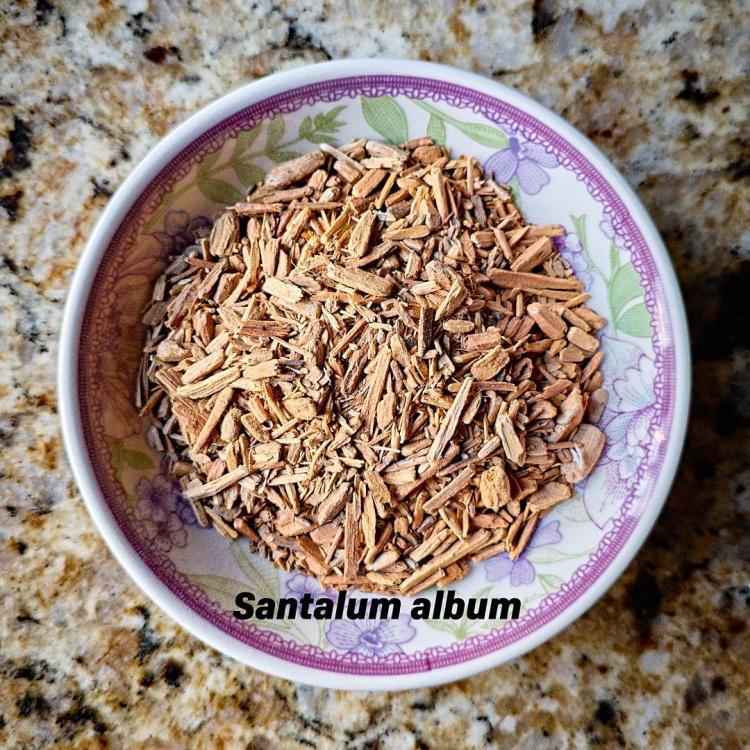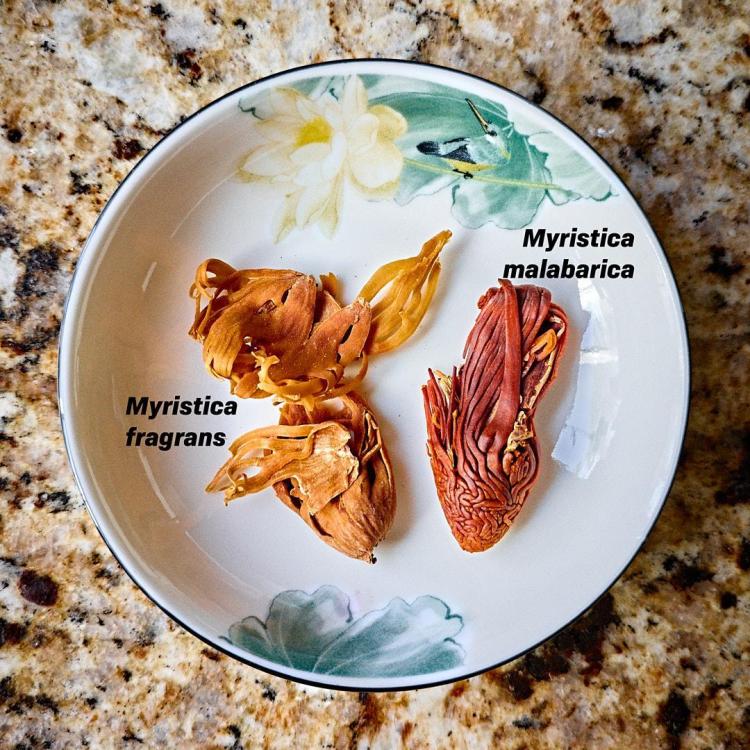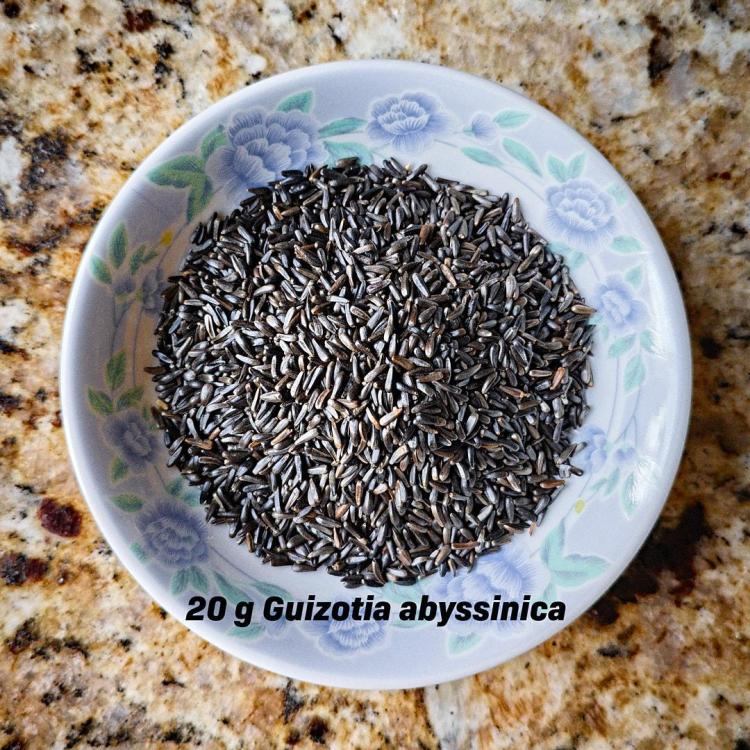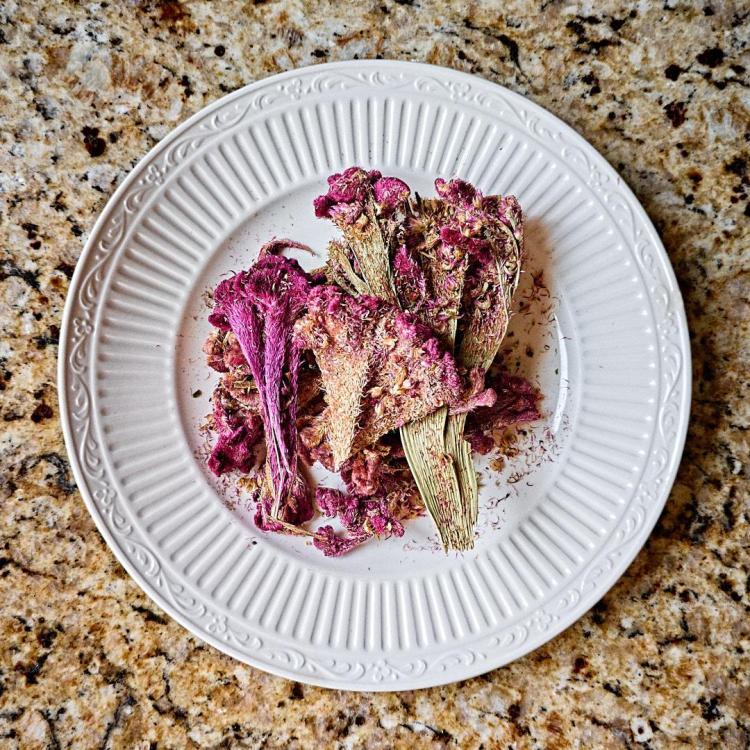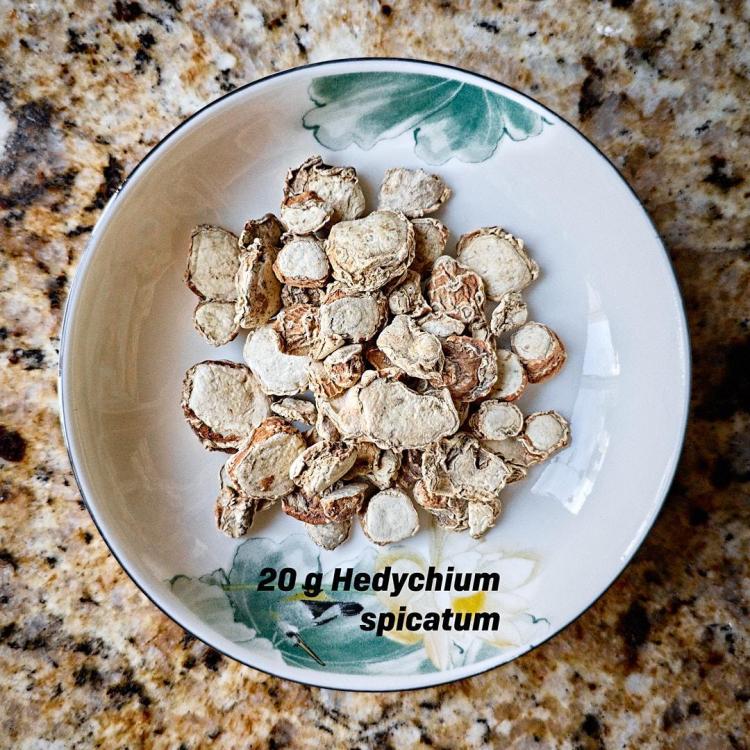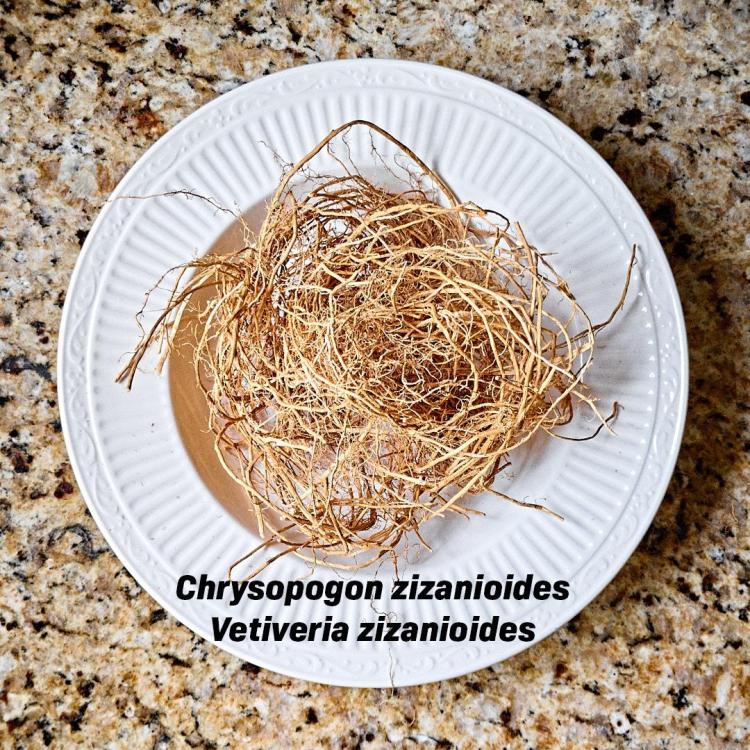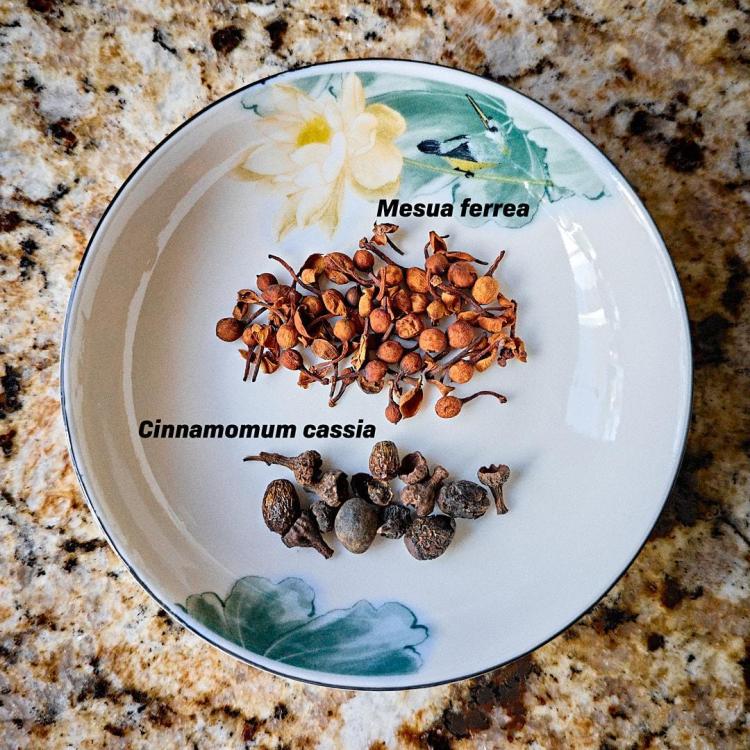
Tan Can Cook
legacy participant-
Posts
97 -
Joined
Content Type
Profiles
Forums
Store
Help Articles
Everything posted by Tan Can Cook
-
I am being picky—the size of that book and the word "Complete" on the title is an inconsistency. Regardless, have you tried any of the recipes?
-
For information purposes, I want to point out that Dishoom: The First Ever Cookbook from the Much-Loved Indian Restaurant isn't a monolithic cookery on "Indian food and cuisine." On the contrary, Dishoom—both the restaurant and cookbook are based in Parsi cooking in the context of Irani cafes in and around Mumbai in the Indian state of Maharashtra. The Parsi people and community are Zoroastrian Iranians who have fled Iran to avoid religious persecution in the times of the Arabic conquest of Iran (starting of Muslim rule of Iran) and found refuge in the Indian state of Gujarat.
-
I made royal chicken with gravy of Hyderabad. This was superb with naan, either your standard variety or best with flaky Kerala paratha. Making (cooking) is relatively easy, you simply put the marinated chicken into the oven and slow cook until done.
-
By Tan Can Cook Modified and Adapted from Bilkees I. Latif and Pratibha Karan Serves 10 A decadent, slow-cooked boneless chicken with rich, fragrant, creamy gravy, Dum ka Murgh Nawabi is emblematic of the leisure and passion that define Hyderabadi cuisine. Rooted in the Nizami royal kitchens of Hyderabad, Telangana, this dish stands as one of the most elegant in my repertoire—a true “fancy chicken with gravy.” When I cook, it’s not just food for sustenance but exploring, learning, and appreciating the Greater Indian Culture. Hyderabad stands apart as the only South Indian city to rival the refinement and nicety of Lucknow and Rampur, its culinary traditions reflecting centuries of confluence and refinement. Fried Onions / Birista [Yields: 476 g (2¾ Cups) Onion Oil; 192 g Fried Onions] 520 g (3 cups) vegetable oil 785 g (1½–2 large) onions, thinly sliced Charoli-Mixed Melon Seeds-Almond Paste (Ground Into Paste) 12 g (1 tbsp) char magaz (mixed melon seeds) 20 g (2 tbsp) charoli nuts 10 g (8) almonds, blanched 100 g whole plain yogurt Dum ka Murgh Masala (Ground Into Powder) 1 g (6) green cardamoms 0.63 g (6) cloves 3 g (2″) cinnamon sticks 2.25 g (1 tsp) cubeb berry (Piper cubeba) 2 g (¾ tsp) black cumin seeds (Elwendia persica) 3 g (2 tsp) coriander seeds 10 g (1 tbsp) poppy seeds 2.00 g (1 tsp) sandalwood powder, culinary grade (Santalum album) Marination (Overnight) 1.626 kg boneless chicken breasts and thighs, skinned and curry cuts 58 g ghee 96 g (½ cup) onion oil 20 g (1 tbsp) ginger paste 18 g (1 tbsp) garlic paste 1.50 g (½ tsp) turmeric powder Prepared Dum ka Murgh Masala Prepared charoli-mixed melon seeds-almond paste 1.00 g (2 tbsp) dried mint leaves, coarsely crushed 12 g (3 tbsp) fresh coriander, chopped 16 g (2 tbsp) Kashmiri red chili powder or paprika powder 400 g whole plain yogurt 19 g (2½ tsp) fine salt 142 g fried onions Dum Pukht (Slow Cooking) 0.5 g (a large pinch) saffron, soaked in 1 tbsp warm milk (or rose water) and ground Dhungar (Smoking) Piece of live charcoal Half an onion with skin ½ tsp ghee Garnishing Mint sprigs, chiffonade 50 g fried onions Zest of lime/lemon Method Fry onions until dark brown. Drain oil. Keep aside 50 g of fried onions and saffron. Mix the rest of the ingredients for the marinade with the chicken. Leave in the refrigerator overnight. Keep at room temperature for 1 hour before cooking. Add saffron. Place prepared marinated chicken in an oven-proof dish and bake in a preheated oven at 400°F for 45 minutes. Let it rest for 15 to 20 minutes. Before serving, light a piece of charcoal. Put the half-onion with skin inside the dish with ghee in it. Using tongs, pop a burning piece of charcoal in the oil. To catch the fresh charcoal flavor and retain the smoky aroma, cover the dish quickly. Before serving, remove charcoal and spread oil over chicken. Garnish with fried onions and sprigs of mint.
-
Patthar ke phool / dagad phool (black stone flower) [Parmotrema perlatum]. It earns its name from thriving on rocks and trees, from which it is carefully scraped, dried, and later used primarily in Maharashtrian and South Indian cuisines, especially in Tamil and Telugu cooking. This is a “less is more” spice! At first glance, it looks gnarly and odd in its dried form; however, lightly toast it or fry it in a bit of oil, and it transforms—releasing an aroma that evokes warm, familiar comfort. To me, it works much like a catalyst or enzyme in our bodies—operating behind the scenes, subtly amplifying flavors. When used thoughtfully, patthar ke phool adds an additional layer of umami, enhancing the overall depth of a dish. This is a common spice and should be able to source locally. 100 g (3.5 oz) patthar ke phool cost $3–$5. Locally. Pippali (long pepper) [Piper longum]. It has a sharper profile than our everyday, common black pepper (Piper nigrum). Used for its Ayurvedic properties, Tamil cuisine, and in Nihari from Lucknow, Uttar Pradesh. 198 g (7 oz) pippali cost $6.99. Locally.
-
I made a collage banner of the past dinners I've made for my elderly retired parents and younger siblings
-
The following books are great and they demonstrate the distinctive qualities of what separate Pakistani Pakwan (Pakistani Cuisine) from Indian food. The Essential Sindhi Cookbook by Aroona Reejhsinghani focuses cuisine from Sindh Province of Pakistan. The remaining books provide general highlights and overview of the various cuisines and food practices from the provinces making up Pakistan. Pakistan: Recipes and Stories from Home Kitchens, Restaurants, and Roadside Stands by Maryam Jillani is pre-ordered and will be published in March 25, 2025. The Pakistani author is currently based in the Philippines and has an active social media on Instagram. https://www.instagram.com/maryamxjillani/. I was informed by her that the book focuses and provides on the comprehensive culinary culture of the various provinces making up Pakistan. Zareen’s Pakistani Kitchen: Recipes from a Well-Fed Childhood by Zareen and Umair Khan (husband and wife co-authors and co-owners of the restaurant of the same namesake in Redwood City, CA) will be out later in March 18 2025. This book features the cuisine of the Memons—an ethnic community in Pakistan originally hailing from Gujarat, India, and Karachi, Pakistan. Sindh: Sindhi Recipes and Stories from a Forgotten Land by Sapna Ajwani is not yet out here in the USA via Amazon US. It has been published in India by the large and famous publisher that is HarperCollins India. If you don't want to wait, check out the independent bookseller going by the name "Books Puddle" based in New York at Abebooks.com. The vast majority of my 45 regional cookbooks are purchased from them. Their other names are "Table Top Art" on Amazon Marketplace and "Cold Books" on Biblio.com. They specialize in authentic, genuine copies of regional Indian cookbooks imported from India. Summers Under the Tamarind Tree: Recipes and Memories from Pakistan by Sumayya Usmani does not need any introductions. A great author and wonderful memoirist, her book contains wonderfully genuine Pakistani recipes with instructions on specific provincial spice blends commonly use in Pakistani homes in Pakistan. The Food and Cooking of Pakistan: Traditional Dishes From The Home Kitchen by Shehzad Husain is the least of my favorite—"diluted"—and I don't recommend it. Each of us is on a different cooking journey, with varying experiences and goals for learning Pakistani cuisine. With Shehzad-ji's book, she doesn't provide recipes for essential Pakistani-style spice mixes like garam masala, chaat masala, or Baluchi-style Saoji masala, etc. Another note is that Shehzad-ji often calls for canned, processed chickpeas in many of her dal recipes. She prefers vegetable ghee, as opposed to the real and much more flavorful ghee that is easily available on the market! Select the book(s) that aligns with your cooking goals and preferred format.
-
Thanks for the share @Shel_B. As someone who loves spices and herbs, I find the text from the article tickling my curiosities, especially the Chinese brown cardamom. I am familiar with black cardamom (Amomum subulatum) in their use to impart earthy and woody overtones to foods and masale blends. Everyone is aware of the highly fragrant green cardamoms.
-
Not at all, Ms. Deb @Maison Rustique. Greetings from Vacaville, California. I am finding that most of these rare and specialty spices and herbs are used for their ayurvedic properties. The more I delve into the traditional cookery books from former princely states of India, I find use and mention of them in complex layered spice blends.
-
Amba haldi (mango ginger) [Curcuma amada]. This is another distinctive ingredient used in Maharashtrian and Odia cuisines. It earned its English name, "mango ginger," because it genuinely carries the mild aroma of ripe mango! Botanically related to common turmeric (Curcuma longa), you’ll notice their distinct differences in both color and structure upon comparison. I was fortunate to find amba haldi locally at Spices 4 Less, an Indian grocery store in Fairfield, California. Located at 1349 Oliver Rd. Fairfield, CA 94534. (707) 759-4127. 3.5 oz amba haldi cost $2.49.
-
Native to India, culinary (edible) grade of chandan (white sandalwood) [Santalum album] is sourced locally from Berkeley, California at an herbal shop that's family owned and operated called Lhasa Karnak Herb Company. https://lhasakarnak.com. They stock a wide variety of spices and herbs. If you’re local to Berkeley, CA, I highly recommend visiting them. Ships to USA addresses only. 2506 San Pablo Avenue. Berkeley, CA 94702. (510) 548-0380. 1942 Shattuck Avenue. Berkeley, CA 94704. (510) 548-0372. I prefer the San Pablo location for its easier parking (in-store pickup) and added security—thanks to the Bank of America lot just down the block. When buying, I opt for sandalwood chips to save on costs, then grind them into a fine powder myself. 113.40 g (4 oz) chandan wood chips cost $32.00. 113.40 g (4 oz) chandan fine powder cost $40.00.
-
Silkrute.com is based in Yamunanagar, Haryana, India. This online store is where I source specialized spices, herbs, and products. They source items from across India and ship internationally. Plan your restocking accordingly. Shipping from India to the USA typically takes about 14 days. Visit their website for current pricing and availability. All prices are in US Dollars (USD). Some ingredients listed in Kalustyan's are found and can be purchased from Silkrute. Free shipping on orders above $30. For better search results of products, use botanical (scientific) names and transliterated Hindi names in the search field. The purpose of this entire topic and thread is to empower anyone outside of India to reproduce, as close to 1:1 as possible, any recipe from the referenced regional cookbooks—with viable ingredient substitutions and minimal omissions. At the very least, consider buying the ingredient(s) as once-in-a-lifetime and use it in the recipe as intended. Rampatri / maypatri / maipatri (wild mace / malabar mace / mugwort) [Myristica malabarica]. References: Pangat, a Feast: Food and Lore from Marathi Kitchens by Saee Koranne-Khandekar and Rare Gems: A Non-Vegetarian Gourmet Collection from Maharashtra by Aditya Mehendale, where it is sometimes referred to as "mugwort." Do not confuse this with Artemisia vulgaris, also called mugwort. The common and widely available mace (Myristica fragrans) is highly fragrant, whereas Myristica malabarica imparts an earthy, woody scent. Refer to the picture. Observe the stark difference in color and morphology—this is the easiest way to differentiate between the two. 200 g rampatri / maypatri cost $10.55 + $3.00 (Flat Rate Standard Shipping) = $13.55. Ramtil (niger seeds) [Guizotia abyssinica]. Used in Marathi cuisine. Reference: Rare Gems: A Non-Vegetarian Gourmet Collection from Maharashtra by Aditya Mehendale. 100 g ramtil cost $6.34 + $3.00 (Flat Rate Standard Shipping) = $9.34. Mawal (Kashmiri cockscomb flower) [Celosia argentea var. cristata]. Used in Kashmiri cuisine to achieve the signature crimson red color, particularly in Rogan Josh. Alternatively, commonly available locally ratanjot [Alkanna tinctoria] can be used and is a viable direct substitute. Always buy ratanjot in whole bark form, not powdered. 100 g mawal cost $6.99 + $3.00 (Flat Rate Standard Shipping) = $9.99. Meetha itr / meetha attar / mitha Itr (sweet, floral perfume; culinary grade). A few drops of the essential oil are added to biryanis, pulaos, and others in Awadhi, Rampuri, and Hyderabadi cuisines. The popular Deer-brand from Kolkata, West Bengal in 25-grams vial is recommended due to its floral blend of screwpine and sandalwood. Package of (2) 25-grams vials of meetha itr cost $12.91 + $3.00 (Flat Rate Standard Shipping) = $15.91. Kulanjan / paan ki jad (lesser galangal) [Alpinia officinarum]. Appears in the recipe for Hyderabadi Potli Ka Masala in A Princely Legacy: Hyderabadi Cuisine by Pratibha Karan. Not to be confused with the more locally available greater galangal (Alpinia galanga) at Asian (Thai) grocery stores. Refer to picture to see the differences. 100 g kulanjan / paan ki jad cost $4.80 + $3.00 (Flat Rate Standard Shipping) = $7.80. Kapoor kachri (spiked ginger lily) [Hedychium spicatum]. Used in Hyderabadi Potli Ka Masala in the book A Princely Legacy: Hyderabadi Cuisine by Pratibha Karan. 200 g kapoor kachri cost $8.87 + $3.00 (Flat Rate Standard Shipping) = $11.87. Khus ki jad (dried vetiver roots) [Chrysopogon zizanioides / Vetiveria zizanioides]. Imparts a fragrant, earthy aroma in Awadhi and Hyderabadi cuisine. Used in Hyderabadi Potli Ka Masala in the book A Princely Legacy: Hyderabadi Cuisine by Pratibha Karan. 100 g khus ki jad cost $7.19 + $3.00 (Flat Rate Standard Shipping) = $10.19.
-
I have 45 regional cookbooks spanning present day India, Pakistan, Bangladesh, and Iran. Cooking through will take me several reincarnating lifetimes! I don't have a bookshelf so the physical books sat on my desk. Because these books bring sparks of immense joy to me, all the hardcovers are covered in Brodart archival mylar—even books without dust jackets. The softbacks are in self-adhesive archival plastic from Demco. They are my source of references helping me learn and explore regional Indian, Pakistani, Bangladeshi, and provincial Iranian (Persian) cuisines. The authors are culinary custodians and stewards of their respective regional cuisine. I have performed due diligence on the authors' culinary backgrounds and their expertise—ensuring that the recipes and techniques I am learning are close to the traditional and classical source obtained from India as much as possible. All of these books with an exception of a few are published in India, written for the Indians in India. I have included a collage representation of my books.
-
Interestingly, another Kashmiri Ver recipe is simpler; however, this one includes addition of garlic and shallots. Kashmiri Ver Paste from Wazwaan: Traditional Kashmiri Cuisine By Sharief, Shafi and Rafiq Waza with Rocky Mohan Pound Together to a Coarse Paste 250 g garlic (lasan) 250 g shallots (praan) Dry Roast and Grind to a Fine Powder 1 kg Kashmiri red chilli powder 50 g black cardamoms (bari elaichi) 1 tbsp black cumin seeds (shah jeera) 1 tbsp green cardamom seeds (chhoti elaichi dana) 1 tbsp cinnamon powder (dalchini) 1 tbsp dry ginger powder (sonth) Method Mix the garlic and shallot paste with this powder. Shape them into cakes and make a hole in the centre big enough to pass a thin rope through it so that the cakes can be strung together and kept for use later. Dry the cakes in the sun until they have no moisture left.
-
I've never heard of "basaar" or "bassar" masala until now. From looking at online recipes and packaging, I wonder—if it is a British Indian and/or British Pakistani invention? As in, I don't think any members of the South Asian diaspora would spend time making the traditional Kashmiri spice cakes. With your typical UK weather, I don't think "drying out in the sun" would work. Someone came and make those "Kashmiri spice cakes" into ground, powder form and called it a catchy name to sell their product? This is possible. I have Wazwan: Traditional Kashmiri Cuisine and Multiple Flavors of Kashmiri Pandit Cuisine. There is no mention of the masala name. I did find the following: Kashmiri Succh Bari (Ver) from Multiple Flavors of Kashmiri Pandit Cuisine By Annapurna Chak They are flat doughnut-shaped cakes of ground spices with a strong aroma. Generally made in bulk at the time of weddings, they can be stored for the rest of the year or more. Small amounts are broken off as required, crumbled and sprinkled over food to give a distinct Kashmiri flavour. Kashmiri Spice Cake Ingredients 250 g black gram flour (dhuli urad dal atta) 60 ml water 125 ml mustard oil (sarson ka tel) Powder 70 g fenugreek seeds (methi dana), roasted in a little oil and then powdered 15 g turmeric powder (haldi) 60 g red chilli powder 15 g cloves (laung) 60 g black cardamom seeds (badi elaichi) 6 bay leaves (tej patte) 60 g cumin seeds (sabut zeera) 15 g green cardamoms (choti elaichi) 60 g dry ginger powder (sonth) 10 g roasted asafoetida (hing), powdered and dissolved in a little water 30 g coriander seeds (dhaniya) 5 g mace (javitri) 30 g cinnamon (dalchini) 1 nutmeg (jaiphal) Method Grind the above ingredients into powder. Mix the powdered spices with the black gram flour till well blended. Then adding mustard oil, dissolved hing and water little at a time, knead the mixture into firm stiff dough. The dough should not be soft. Use as little water as possible unless too dry to knead. Keep the dough covered in a vessel overnight. The next morning, from the kneaded dough, make ¼ inch thick flat baris (cakes) of 2 inches in diameter with a hole in the centre and arrange them individually on greased thalis (plates). Dry them out in the sun (on both sides) for the next two–three weeks till completely dry. Store them in an airtight container when thoroughly dried. These baris, if made properly can last a few years. Tip: Avoid making them during the monsoon or foggy days in winter since they need a lot of sunshine to dry the natural way.
-
Just an update that I was able to create another post here on eGullet on sourcing exactly where to purchase the mentioned rare spices and herbs for the USA at https://forums.egullet.org/topic/167482-sourcing-rare-spices-herbs-and-compulsory-ingredients-used-in-regional-indian-pakistani-bangladeshi-and-provincial-iranian-persian-cuisines. @Tempest63 ji. I know you're in the UK. Will you please consider sharing your knowledge and experience of purchasing the ingredients over at the thread I aforementioned? I want to help create a stockist here on eGullet, where people can replicate the recipes in regional Indian books published in India on a 1:1 basic with viable substitutions and minimal omission of ingredients for those of us outside of India and residing in the West.
-
I want to pause here to encourage and invite others to contribute and engage in discussion (if any). Please consider sharing your trusted local and online sources for rare and specialty spices and herbs. For those in the United Kingdom (UK), Canada, or anywhere else globally—where have you sourced any of the spices and herbs I’ve mentioned? For clarity and to avoid confusion, please include the scientific (botanical) name where applicable. In the next thread, I will be sharing details on Silkrute—an Indian-owned, operated, and Haryana-based online store that I’ve personally vetted. Silkrute ships globally and sources directly from India. Shipping from India to Northern California averages 14 days. As a reminder: I am not affiliated with any of the merchants or online stores. In accordance with eGullet forum regulations, the provided links direct to the original sources. They are intended solely as references to expand and enrich our collective knowledge of the culinary arts! As this is my comprehensive and detailed source list, please perform your due diligence. I will not be responsible for any issues encountered, as individual shopping experiences may vary. I’ve created a companion thread here at eGullet: Regional Indian, Pakistani, and Bangladeshi Masale (Spice Blends). https://forums.egullet.org/topic/167461-regional-indian-pakistani-and-bangladeshi-masale-spice-blends. Feel free to watch and follow. If you have any questions, reply directly in the thread—I'll gladly point you in the right direction.
-
Kalustyan's https://foodsofnations.com Ships within the USA only. Widely regarded as “the spice shop mecca of the US.” Located at 123 Lexington Avenue, New York, NY 10016. Plan your restocking accordingly—shipping and handling fees can be costly, and local sales taxes (where applicable) will apply. Visit their website for current pricing and availability, or contact them directly for stock inquiries. Ingredient names are provided in transliterated Hindi and Urdu—often how they appear in aforementioned books. Common English name(s) are provided in parenthesis. Scientific (botanical) names are provided in brackets for clarity, ensuring accuracy and avoiding confusion or misnomers. All prices are in US Dollars (USD). Nagkesar (Ceylon ironwood buds / cobra saffron) [Mesua ferrea]. Used in Maharashtrian and Konkani cuisines and spice blends. Reference: Pangat, a Feast: Food and Lore from Marathi Kitchens by Saee Koranne-Khandekar, where nagkesar is referred to as "cobra saffron." 3 oz nagkesar cost $17.97 + $15.00 (USPS Ground Advantage) = $32.97. Kala Nagkesar (cassia buds) [Cinnamomum cassia / Cinnamomum aromaticum]. There is often confusion due to similar terminology in regional Indian languages. References: The Essential Marathi Cookbook by Kaumudi Marathé and Rare Gems: A Non-Vegetarian Gourmet Collection from Maharashtra by Aditya Mehendale, where nagkesar refers to "cassia buds." 3 oz kala nagkesar cost $19.99 + $10.80 (USPS Ground Advantage) = $30.79. Kababchini (cubeb berry / tailed pepper) [Piper cubeba]. Frequently mislabeled as "allspice" in regional Indian cookbooks published in India. This is a common misnomer. Piper cubeba is different from Pimenta dioica (allspice); they differ in both appearance and flavor. 3 oz kababchini cost $14.99 + $10.80 (USPS Ground Advantage) = $25.79. Peeli Mirch (yellow chili powder). Used in Awadhi and Rampuri cuisine for its mild piquency and cosmetic purposes. Kalustyan’s sources theirs from chilies grown in Punjab and south of Kashmir. 6 oz peeli mirch cost $8.99 + $10.80 (USPS Ground Advantage) = $19.79. Ajmod / Radhuni (wild celery seeds) [Trachyspermum roxburghianum / Carum roxburghianum]. A compulsory ingredient in Bengali Panch Phoron and an essential cornerstone of Bengali cooking across both West Bengal and Bangladesh. Omitting radhuni from Panch Phoron is sacrilegious to Bengalis! Do not confuse with commonly available locally ajwain (carom seeds) [Trachyspermum ammi / Trachyspermum copticum]—they are distinct spices. 3 oz ajmod / radhuni cost $17.97 + $10.80 (USPS Ground Advantage) = $28.77.
-
Thank you for the information. Yup. The styling options as well as font sizes work here. I will be formatting my post for clarity and easy to read styling. Already, I have decided to use font-size 16 at part of my stylesheet for my posts and replies.
-
For further reading and recipe research, the following books are in my personal collection. The authors are culinary stewards and custodians on their respective regional cuisine spanning India, Pakistan, Bangladesh, and Iran. Bibliography is styled in Chicago Manual of Style (CMOS). Abdulla, Ummi. A Kitchen Full of Stories: Mappila Kitchen Treasures. Self-published, Bengaluru, Karnataka: Tholasi Prints India, 2018. Ali, Meera. Dining with the Nawabs. India: Lustre Press, Roli Books, 2017. Alikhani, Nasim, and Theresa Gambacorta. Sofreh: A Contemporary Approach to Classic Persian Cuisine. New York, NY: Alfred A. Knopf, 2023. Batmanglij, Najmieh. Food of Life: Ancient Persian and Modern Iranian Cooking and Ceremonies. 4th ed. Chevy Chase, MD: Mage Publishers, 2021. Batmanglij, Najmieh. Cooking in Iran: Regional Recipes & Kitchen Secrets. 2nd Updated ed. Chevy Chase, MD: Mage Publishers, 2022. Bhatnagar, Sangeeta, and R. K. Saxena. Dastarkhwan-e-Awadh: The Cuisine of Awadh. Noida, Uttar Pradesh, India: HarperCollins Publishers, 2015. Choudhurani, Renuka Debi. Pumpkin Flower Fritters and Other Classic Recipes From a Bengali Kitchen. Ranikhet, Uttarakhand, India: Orient Blackswan, 2011. Das, Jyoti. Ambrosia from the Assamese Kitchen. Daryaganj, New Delhi, India: Rupa & Co., 2008. Das, Jyoti. Essence of North East. New Delhi, India: National Book Trust, 2019. Das Gupta, Minakshie, Bunny Gupta, and Jaya Chaliha. The Calcutta Cookbook: A Treasury of Recipes From Pavement to Palace. Gurugram, Haryana, India: Penguin Books, 1995. Husain, Salma Yusuf. The Mughal Feast : Recipes From The Kitchen Of Emperor Shah Jahan. New Delhi, India: Lustre Press, Roli Books, 2021. Husain, Salma Yusuf. Flavours of Avadh Journey from the Royal Banquet to the Corner Kitchen. New Delhi, India: Niyogi Books, 2022. Husain, Salma. Alwan-E-Nemat: A Journey Through Jahangir's Kitchen. India: Penguin Random House India Private Limited, 2024. Hussain, Jafar Mirza. The Classic Cuisine of Lucknow: A Food Memoir. Translated by Sufia Kidwai. Lucknow, Uttar Pradesh, India: Sanatkada Publications, 2016. Kalra, J. Inder Singh, and Pushpesh Pant. Classic Cooking of Punjab. New Delhi, India: Allied Publishers, 2004. Kalra, J. Inder Singh. Classic Cooking of Rajasthan. New Delhi, India: Allied Publishers, 2006. Kannampilly, Vijayan. The Essential Kerala Cookbook. New Delhi, India: Penguin Books, 2003. Kapoor, Sanjeev, and Harpal Singh Sokhi. Royal Hyderabadi Cooking. Mumbai, Maharashtra, India: Popular Prakashan, 2009. Karan, Pratibha. A Princely Legacy: Hyderabadi Cuisine. Gurugram, Haryana: HarperCollins Publishers India, 1998. Khan, Noor, and Sufia Kidwai. Lucknowi Bawarchi Khane: Recipes from Lucknow Homes. Lucknow, Uttar Pradesh, India: Sanatkada Publications, 2022. Khan, Tarana Husain. Degh to Dastarkhwan: Qissas and Recipes from Rampur Cuisine. Gurugram, Haryana, India: Penguin Books, 2023. Khatau, Asha. The Best of Epicure’s Gujarati Cuisine. Mumbai: Popular Prakashan, 2012. Koranne-Khandekar, Saee. Pangat, a Feast: Food and Lore from Marathi Kitchens. Gurugram, Haryana: Hachette India, 2019. Latif, Bilkees I. The Essential Andhra Cookbook with Hyderabadi Specialities. New Delhi, India: Penguin Books, 1999. Manekshaw, Bhicoo J. Parsi Food and Customs: The Essential Parsi Cookbook. Gurugram, Haryana, India: Penguin Books, 1996. Marathé, Kaumudi. The Essential Marathi Cookbook. New Delhi, India: Penguin Books, 2009. Mehendale, Aditya. Rare Gems: A Non-Vegetarian Gourmet Collection from Maharashtra. India: Om Books International, 2015. Menezes, Maria Teresa. The Essential Goa Cookbook. Gurugram, Haryana, India: Penguin Books, 2000. Misra, Prachi Raturi. Uttarakhand Cuisine: Food and Folktales From The Hills! India: Om Books International, 2024. Murugappan, Meyyammai, and Visalakshi Ramaswamy. The Chettinad Cookbook. Chennai, Tamil Nadu, India: Meyyammai Murugappan & Visalakshi Ramaswamy, 2014. Nandan, Anjani. Beyond Litti Chokha: Flavours of Purvanchal and Mithilanchal. Siliguri, West Bengal, India: Inspiria Knowledge Campus, 2024. Narain, Priti. The Essential Delhi Cookbook. Gurugram, Haryana, India: Penguin Books, 2000. Osman, Shawkat. Bangladeshi Cuisine. Kolkata, West Bengal, India: Mapin Publishing, 2008. Prasada, Neha. Dining with the Maharajas: A Thousand Years of Culinary Tradition. India: Lustre Press, 2013. Radhakrishna, Sabita. Annapurni: Heritage Cuisine from Tamil Nadu. New Delhi: Roli Books, 2015. Radhakrishna, Sabita. Paachakam: Heritage Cuisine of Kerala. New Delhi: Roli Books, 2022. Reejhsinghani, Aroona. The Essential Sindhi Cookbook. Gurugram, Haryana, India: Penguin Books, 2004. Shaikh, Razique Hosain. Ama Rajya Ama Khadya: The Traditional Food Lab of Odisha. Bhubaneswar, Odisha, India: Walnut Publication, 2022. Singh, Digvijaya. Cooking Delights of the Maharajas: Exotic Dishes from the Princely House of Sailana. 14th ed. Mumbai, Maharashtra, India: Vakils, Feffer & Simons, 2022. Tripathy, Usha Rani. My Odia Kitchen. Bhubaneswar, Odisha, India: Amadeus Press, 2016. Waza, Sharief, Shafi Waza, Rafiq Waza, and Rocky Mohan. Wazwaan: Traditional Kashmiri Cuisine. New Delhi, India: Roli Books, 2020. Zaman, Niaz. Bosha Bhat to Biryani: The Legacy of Bangladeshi Cuisine. Dhaka, Bangladesh: University Press Limited, 2012.
-
Namaskar(am). As-salaam alaikum. Adaab. Sat sri akal. Vanakkam. Nomoskar. Salam! Hello from Northern California (USA). My name is Ronald N. Tan; I am a home cook (personal chef) with a laser-focused culinary interest in regional Indian, Pakistani, Bangladeshi, and provincial Iranian (Persian) cuisines. My aim is to foster and cultivate discussion while disseminating and sharing knowledge on sourcing rare, specialty spices and herbs—compulsory and outside of India—so that recipes from regional Indian cookbooks published in India can be reproduced 1:1, with viable substitutions and minimal omissions. I will be updating this post in “bite-sized” threads. Please consider following or watch this thread for updates and discussion. I am not affiliated with any of the merchants or online stores. In accordance with eGullet forum regulations, the provided links direct to the original sources. They are intended solely as references to expand and enrich our collective knowledge of the culinary arts! As this is my comprehensive and detailed source list, please perform your due diligence. I will not be responsible for any issues encountered, as individual shopping experiences may vary. Spices and herbs should be purchased in whole form whenever possible, stored in airtight glass containers, and kept away from light. To maximize spice potency, slow toast over low heat to activate their essential oils. To achieve finer grounds, sieve using the smallest mesh. Place the larger pieces back into any grinder and repeat as necessary. For handling harder spices and herbs, e.g. dried vetiver roots (Chrysopogon zizanioides / Vetiveria zizanioides), lesser galangal (Alpinia officinarum), or spiked ginger lily (Hedychium spicatum), a heavy-based granite mortar and pestle is necessary. Repeating (2) and (3) as necessary. Support your local South Asian (Desi) and Middle Eastern grocers. Their contribution to enhancing and diversifying our culinary culture is paramount and often understated—source common ingredients locally whenever possible. Establish relationships with the owners and managers of these stores, as they are invaluable sources of insight and can recommend the highest-quality products. Only resort to online sources when local options have been exhausted.
-
Without getting into politics, present day India, Pakistan, and Bangladesh makes up "India" pre-partition. I have about 45 books purchased laser-focused to aforementioned country cuisines and I would have to be reincarnated several lifetimes over to cook from all those books. During this lifetime, I am following the "Mughlai/Nizami" and its adjacent. That means, I focus on foods from Awadh, Rampur, Hyderabad, and Bengali (West Bengal and Bangladesh). Then, I focus on Malayali cuisine, Maharashtrian, Tamil, Bihari, Kashmiri Wazwan, NE Indian. Indeed, a labor of love and bespoke spice blends!!! I love being a masalchi. Cooking "real Indian food" takes time. That's why almost everyone in India has hired help in the kitchen. In countries like UK and here in USA, hired help in the kitchen is costly, only people with high-tier salaries can afford this luxury. Anyways...I digress.
-
I exclusively cook cuisines from India, Pakistan, Bangladesh, and Iran only. When I am alone, I play Hindi, Telugu, and Tamil music on the ceiling speakers. That helps with mood and when the food is cooking on dum pukht or similar, cleaning up pots, pans, and colanders don't feel like "work or a chore." I also surround myself almost 24/7 with mainly Hindi and Urdu music from films to help me retain (if any) words/phrases I learn via self-study.
-
Vah! Kya baat hai, @Tempest63 ji. You can cook!!! I am beyond enthralled at your love towards regional Bhartiya Khana. Well done to your cooking. I know I've read somewhere on your post history that you have been cooking Indian food as long as I've been alive! My commendations to you sir.
-
I look at various recipes for Singaporean Nyonya and almost the vast majority of recipe ingredients has dried red chilies and combination of "body-providing" spices like cumin and coriander. Leading up to smaller amounts of aromatic and fragrances spices. I know most of the Singaporean Indians are primarily from Telugu and Tamil communities. I am certain they brought their sambhar and podi blends and mix is in along with the culinary diversity of Singapore. What's interested to note is that various spice blends from Maharashtra and adjacent Konkani Belt has the similar spice blend such that ground and dry red chillies make up the most.




